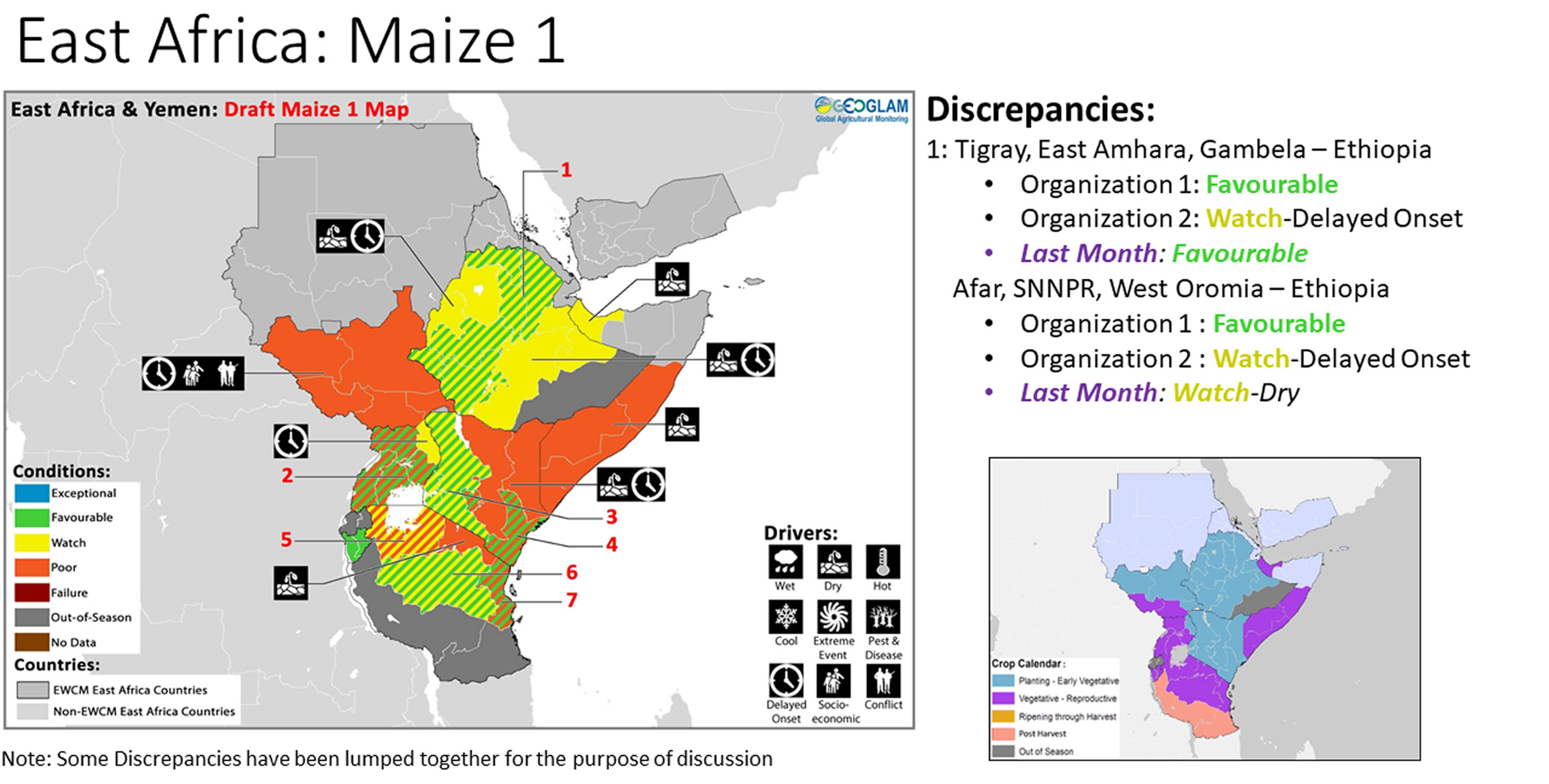Crop Monitor Methodology
The Crop Monitor approach brings together international experts from national, regional, and global monitoring systems, space agencies, agriculture organizations, and universities, that can share and discuss information from a variety of independent yet complementary sources, enabling them to reach a consensus on global crop conditions. These activities are conducted in line with the GEOGLAM Framework with the goal of enhancing the availability of food production information within the context of commodities markets and early warning of production shortfalls.
The development of the monthly Crop Monitor reports is carried out at the end of the month and begins ten days before the publication date, (first Thursday of the month), in order to ensure the timeliness of the information. Partner organizations submit crop condition information using the common crop condition classification system using the web-based interface, a custom version of the Crop Monitoring Exploring Tool, based on their own data sources and decision support systems. The web-based interface provides up to date key EO data products for agricultural monitoring along with crop condition plots of EO data, and contextual information on crop spatial extent (Crop Masks) and crop growth stages (Crop Calendars) at the sub-national level.

The information is compiled by the Crop Monitor team into a draft report and preliminary maps by crop. Data is compared against the various EO-derived data sets in the Crop Monitor interface. Discrepancies and changes from the previous month are identified and submitted to the partners for review. Crop condition discrepancies arise where multiple agencies provide diverging assessments for the same country or sub-national region, and these are often resolved through discussions and sharing of evidence and supporting EO data.

A video conference is held to jointly review the crop condition assessments and provides an opportunity to discuss the individual assessments, supporting evidence, and discrepancies, as well as to address uncertainties, and review crop condition changes relative to the previous assessment and season. Once consensus on crop conditions and drivers has been achieved, draft text and crop condition graphics are then assembled to go through a review process by all partners before being published. The Crop Monitors are published eleven times a year on the first Thursday of the month, every month except January.

In addition to monthly Crop Monitor reports, in-depth mid-month Special Reports are published by the Crop Monitor community in response to developing situations that may impact crop conditions, rapidly changing conditions on the ground, or new climatic outlooks that provide key insight on an upcoming cropping season. The reports are assembled over the course of one to two weeks in direct collaboration with specific partner organizations that are uniquely situated to provide inputs on the given region or country of interest.

